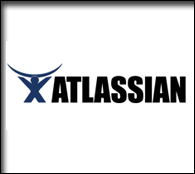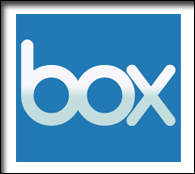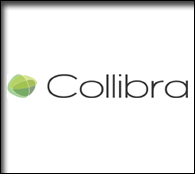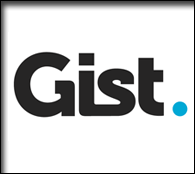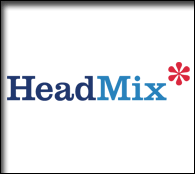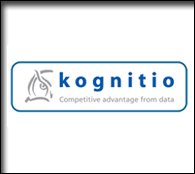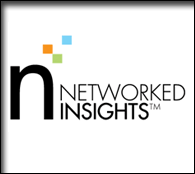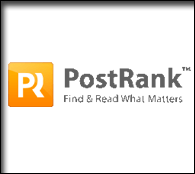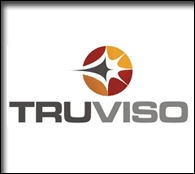narrative/session descriptions
Defrag agenda, day 1
by Eric Norlin on Sep.05, 2008, under conference topics, narrative/session descriptions
I’ve been really digging into the defrag agenda, so much so that what’s currently on the website isn’t totally “current” (that’ll change shortly). As such, I thought I’d walk through and highlight some things, topics and cool stuff that I’m seeing on day 1:
Strategic Intuition and Defrag:Â William Duggan kicks things off with a talk about how his book, Strategic Intuition, relates to all things Defraggy. I’ve told the story many times, but essentially Bill’s book set off light bulbs all over the place for me, and I think his unique mix of modern science and theories on strategy provide some incredible pointers with regards to where semantic, collaborative, implicit technologies should be heading.
Around the Horn with Paul Kedrosky:Â If you’ve ever seen ESPN’s “Around the Horn” - this panel is modeled after that. Pau’s going to be discussing various topics (from both him and the audience) with each panelist — and SCORING their responses. The end result will be the awarding of the first annual “Kedrosky” - and an all around good time. [sidenote: Lou Paglia has explicitly asked that Paul not dive deeply into exotic strategies around financial derivatives. ]
The Quantification of Everything:Â Esther Dyson’s going to bring us deeply into the future - as we begin to think about what it means when our ability to quantify everything out-paces our ability to process, analyze or even store all of that data.
Getting into the “flow” apps:Â This one’s not on the website yet, but here we’ll be exploring this new set of applications that are broadly about “flow.” Twitter is the classic example. We’ll be bringing a few new examples, and an audience discussion moderated by Chris Shipley. It is my personal belief that “flow apps” are about to change the fundamental ways in which we imagine and interact with our productivity tools (email, messaging, collaboration, etc), and I think this session is a great jumping off point for further discussion.
After that, we’ll head into some breakouts. I won’t highlight all of them here, but a couple of fun notes…
Knowledge Networking and Ambient Intimacy:Â Leisa Reichelt (who unfortunately can’t be with us) coined the term “ambient intimacy” to convey the weird thing that happens as you get to know topics or people better simply by “hanging around” them (via tools like FriendFeed). Perry Mizota is going to take that initial thought and then dive into how that relates to “networked knowledge” — or the power that comes from insight derived by connections.
Is collaboration changing how we consume and interact with analysis?:Â This is a question that Sam Lawrence first raised when he began publicly grading analyst firms in the interest of transparency. Now Sam’s flipping the usual meme and putting the analysts on the spot. Fireworks, anyone?
Appfrica: the growth of information overload in Africa:Â When Jon Gosier, who lives in Africa, approached me and said he thought he had something to add to the Defrag discussion, I immediately said “yes.” Not only am I fascinated by the tales Jon can tell, but I’m absolutely determined to have Defrag move past the “usual conference circuit speakers.”
Social Computing and the Enterprise:Â We close the day out by grounding things a bit. Mark Koenig of Saugatuck Technology Research will present his early findings of a major research study they’re doing around the “gaps” between what vendors are promising and enterprises are wanting, seeing, desiring. If the afternoon of day 1 is meant to let you imagine the possibilities, then this session is really meant to bring you back to how we actually can get “down to business.”
I’ve left out a bunch of good stuff — Stowe Boyd on lifestreaming; deriving intelligence from distributed communities, a panel discussion on identity as a filter, and sessions on democratizing data and connected platforms via semantic technologies. I’ll try to highlight more as we go.
Needless to say, Defrag’s day 1 is set up to ignite discussion, stretch our thinking, move all of us out of the “echo chamber” (that we all stay stuck in too often), and finally, bring it all back to earth. The day is capped off with a great evening reception, and birds of a feather dinners that are being organized by Get Satisfaction.
The day will be packed, fun, relaxed, approachable and intimate. You won’t find yourself lost in a sea of bodies — but engaged with exciting people and great conversations.
I hope you’ll join us.
Knowledge Networking and Ambient Intimacy
by Eric Norlin on Jul.24, 2008, under conference topics, narrative/session descriptions
Perry Mizota sent over a session description for “Knowledge Networking and Ambient Intimacy”:
Leveraging the knowledge of others has always been important in maximizing one’s productivity in the business world. Now, as the Internet has become a platform for individuals to communicate their expertise on various topics, the ability to leverage the knowledge of one’s personal network in a general sense is becoming very real. However, as a person’s knowledge becomes more and more distributed — from email and documents on a computer to information on the Web — and transient (e.g., Twitter tweets), keeping track of “who knows what†is not easy. This session will be a panel discussion to discuss topics related to this issue.
Perry and I are now setting out to find the right folks for this (invites are heading out) - we’re looking for a great mix of “business” and “end user” stuff (of course, from people you don’t normally hear from).
Fun stuff!
Rich asks “where’s the beef?”
by Eric Norlin on Jul.22, 2008, under conference topics, narrative/session descriptions
Man, I miss those old Wendy’s commercials!
Rich Hoeg has a session at Defrag entitled, “Social search in the corporate environment,” and was kind enough to send in this description:
Where’s the beef? Have you ever wondered whether all these Web 2.0 tools can be effectively utilized inside the firewall? Come see how a Fortune 100 corporation uses social search, blogs, wikis and podcasts for their technical workforce. You’ll be taken upon a tour of various applications, and Rich will explain what worked … and what didn’t.
I love hearing about what *didn’t* work! Thanks, Rich.
Help me build the identity session
by Eric Norlin on Jul.22, 2008, under conference topics, narrative/session descriptions
We’ve got a session title on the board entitled, “Can identity be a filter for information overload?” Ian Glazer, an analyst with Burton Group is moderating. Here’s the thing: I want help figuring out who Ian should be talking to.
With that goal in mind, a couple of points:
1. This topic is consistently rated as one of the topics that people REALLY want to hear about.
2. The idea is simple: shouldn’t my “identity” help me to more effectively deal with information overload? Shouldn’t it help me find things I wouldn’t normally find and filter out those things that I know I won’t want. Shouldn’t our computers, software and technology get smart enough to know me? I think this goes beyond personalization — I’m not looking to explicitly set up preferences. This should be an implicit act.
3. “Identity Management” is something I know a bit about, and I know that there aren’t any established identity companies doing any of this effectively. Now, to be sure, these companies tend to focus on the enterprise not the interweb. But still, isn’t *anyone* working hard on this? I know folks are — what I want to know is who are the people I should really be talking to about this stuff. Who’s going to blow my mind with a prototype? Who’s the entrepreneur with a big vision that can change this whole field?
So, help us out, won’t ya? I’ve got Ian Glazer of Burton Group moderating the session — and we’re looking for every good idea you have. Lend a hand. ![]()
Anything but ho-hum
by Eric Norlin on Jul.21, 2008, under conference topics, narrative/session descriptions
I’ve been reading a meme lately that goes something like, “tech has gotten boring,” and all I can say is “not in my world.” Sure, maybe if you’re obsessed with the valley-echo, things may seem a little ho-hum, but I’ve been working on the Defrag agenda, so I’m just damn excited!
To that end, I thought I’d start detailing the agenda a bit with both some informal thoughts from me, and some “official” session descriptions as they happen. So, let’s get on with some of the *interesting* things happening at Defrag:
1. “Strategic Intuition and Defrag“: Professor William Duggan is opening the conference with this session. I was introduced to Professor Duggan’s recent book (Strategic Intuition) via Phil Becker. Phil’s wife, Kathi, saw Bill speak at the University of Chicago and immediately recognized the value it held for the defraggy crowd. Professor Duggan’s research focuses on the process by which strategic decisions get made. He details his work through examples as diverse as Napoleon and the Buddha. When I picked up the book, it was a mere matter of paragraphs before I was seeing that the brain processes he details are one of the “big pieces” of what we’re trying to solve with regards to information overload.
We all know that too many tech conferences simply replay the same speakers all of the time. I’m incredibly excited to watch Bill’s talk frame things for us in a way that sets us all off on a different path, and immediately removes us from the “echo chamber.”
2. “Is the flow just too much? Lifestreaming at the edge”: Anyone who knows me knows that I’m impressed by Stowe Boyd’s brain. One of the big pushes around information overload is always how to “limit” things. Declaring “email bankruptcy” is a pretty common happening for folks that come back from vacation (or travel) to find 1000s of email messages, feeds, bits of news and tweets that haven’t been read. Hell, I’ve done it.
What fascinates me about Stowe’s thoughts are his immediate reactions against this surrender. He would rather take us the other way - claiming that perhaps our metaphors of work and living inside of this “flow” aren’t quite caught up to where the technology is trying to lead us. Could it be that we’re all just horribly behind the curve (or flow)? I’m not sure, but I know that Stowe will make us think, and I’m betting that he’ll start to open our eyes to how it is that re-imagining our metaphors around interaction can help to reshape the technologies and tools we’re dealing with.
3. “Fixing Foundational Information Channels — Email, Calendars, RSS, etc”: Following along the same lines as Stowe’s thinking, this session starts with the premise that something is broken in our foundations. Email imagines every message as a letter (a discrete object vs. a thread or networked send). Calendars are silo’d islands of non-interoperability that hearken back to days of paper and the rolodex. And RSS, new as it is, is still delivering us “object-oriented” feeds, and not contextually-driven usefulness. In all three cases, I admit to being completely lost. So, I went out and recruited some smart folks that I know you don’t normally hear from: Ilya from AideRSS, Yori from Timebridge, Deva from ClearContext, and Pete from Mailana. It will all be moderated by the always-on-the-ball, Jeff Nolan — and I can’t wait. Do you want to help us start re-framing the problems here? I hope so.
4. “Observing The Invisible Through Aggregating Information Tomography”: Yep, it is a mouthful. In fact, when Marty Betz (of FirstRain) came to me early on and said he wanted to present this topic, my only response was, “that’s great, but what the hell is it?” Marty went on to explain that much of what he works on is how to take “cross-sections” of information, and how using those cross-sections will unveil things in data that we can’t see by simply digesting one discrete bit (like, “so and so is now CTO of company X”). Once I got it, I immediately said “yes.” Come and find out how looking at information and data sets sideways can reveal things you’ve never seen before.
Now, I ask you: does any of that sound boring? Yea, I don’t think so either.
Come join us (and do so now to lock in the early bird rate).
Defragging the Agenda
by Eric Norlin on Sep.10, 2007, under general, narrative/session descriptions, speakers
I’ve posted the most recent version of the Defrag Agenda, and things are looking mighty good (if I do say so myself)! ![]()
A couple of notes:
1. On the “Sponsor Challenge”: yes, these are spots where we’re challenging our high-level sponsors to give us their vision for Defrag. I’m envisioning this as an American Idol for vendors — where we (the “audience”) get to play Paula, Simon and Randy.
2. On the Open Space: Jerry Michalski is running this and it promises to be something really interesting. We’re actually intertwining “unconference” principles into the show. Some folks have expressed concerns that this will result in general mayhem, as the attendees get involved and stop sitting passively through presentations — I can only hope! The point of Defrag is to gather a community….hence….
3. I’m still nailing down some final pieces, some of which are *sure* to excite. But in the meantime, let me point to some really interesting things -
A) Clay Shirky’s discussion on Social Intelligence.
B) Michael Barrett’s “message of warning” for vendors in the space (and why Defrag stuff worries him; hint - he’s the CISO of PayPal).
C) The entire afternoon of Day 1 — just check out the last few hours: Dick Hardt on “Defragging Identity” (many of you have seen Dick before, but he’s bringing something *totally* new to the stage for the first time); Esther Dyson leading a discussion “On Attention” (as only Esther can); Doc Searls talking about Vendor Relationship Management and what we can all screw-up as we go about defragging; and Ross Mayfield coming at “collaboration” from a completely different angle.
You may have heard these folks speak separately before, but I guarantee that the discussion that emerges out of these rapid fire talks is going to take us places that we haven’t been before.
D) Things you haven’t heard: How about Karen Schneider, a pre-eminent librarian, talking about taxonomy and folksonomy, or Matthew Hurst and JC Herz making us look at defrag topics through the lenses of data visualization?
I get pumped just writing about it! ![]()
Lastly a quick note: I read something this morning about people “monetizing their brands through conferences” - UGH! I assure you that this isn’t a brand that we’re monetizing; it is the initial gathering of a community that will leave Defrag energized to *move* things forward. Beware of people “monetizing their brands” — it leads to puffery.
I hope that we’ll see you there.
Unraveling the Defrag narrative, part 1
by Eric Norlin on Aug.27, 2007, under Uncategorized, narrative/session descriptions
A recent banner ad that we ran touted Defrag as “the intersection of the Implicit Web and Enterprise 2.0″ — one of those phrases that you hope captures something, even if you’re not quite sure what that something is. Actually, wrapping our heads around the ideas that formed Defrag has been something we struggled with from early on (or at least, naming it all). The convention that I’ve used to describe it is the “aha moment” - that flash of insight that occurs in a collaborative session like a brainstorm. Defrag, then, was about building tools that would help to “accelerate the aha” — and it has always seemed that those tools were made up of “implicit things” (things working behind the scenes) and collaborative, enterprise 2.0-y things. Thus, the “intersection.”
As part of digging into Defrag’s narrative, I wanted to play amateur etymologist, so I began with “implicit.” The past participle of “implicate” (from implicare), implicit speaks to an entangling, an intertwining, interlacing, a twisting together. Its opposite, explicit, is that which is unequivocal, expressed and demonstrated. So, by extension, that which is implicit carries natural overtones of ambiguity — which makes sense as the intertwined, interlaced, intertangled nature of the word doesn’t lend itself to the hard edges of an easy definition.
All of that becomes very interesting as we look at the “implicit web” (which is almost redundant) in the light of “attention.” The general idea has been that we leave “traces” of our attention, and that sewing together (interlacing?) these traces can allow some tools to begin to perform operations behind the scene *for* us. In this sense, implicit is being turned to reflect a web that serves us, caters to us, bends the entanglement to our help.
The implication (pun intended), of course, is that the implicit web is one big pile of miscellaneous stuff. That we begin entangled, and through the use of certain tools, are able to derive insight — not from untangling (for the value lies in the entanglement), but rather from the dynamic connectedness of the entanglement (and how that allows for an individual to arrange on the fly according to his or her desires, wants, needs, etc). If everything is miscellaneous and unconnected, we’re screwed. But connected, we walk into the simulator of the Matrix, where we need “guns” — and rows appear according to our liking.
The “Implicit Web” are those qualities that enable us to race toward insight at a faster pace — to discover and assemble the miscellany in such a way as to bring something to collaboration that may not have been as readily available in the past; a hermetic quality of speed and mercurial insight.
You can see where I’m going with this, right?
David Weinberger is our lead-off speaker at Defrag because his thoughts on “everything being miscellaneous” will basically throw a bunch of useful toys, tools and teachings into our mental playroom.
We begin by looking at the moment of insight — and that leads us into the interlaced world of the miscellaneous.
[note: some would say this is where we run into business intelligence.
